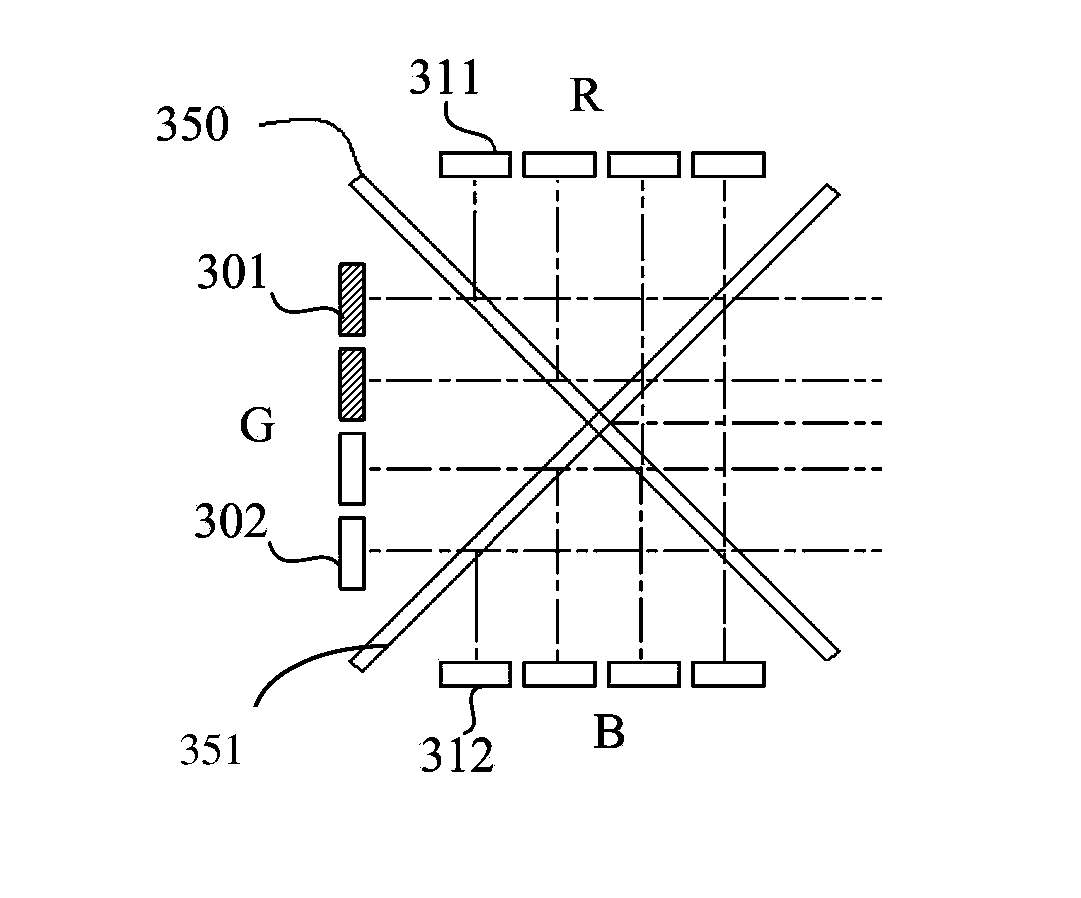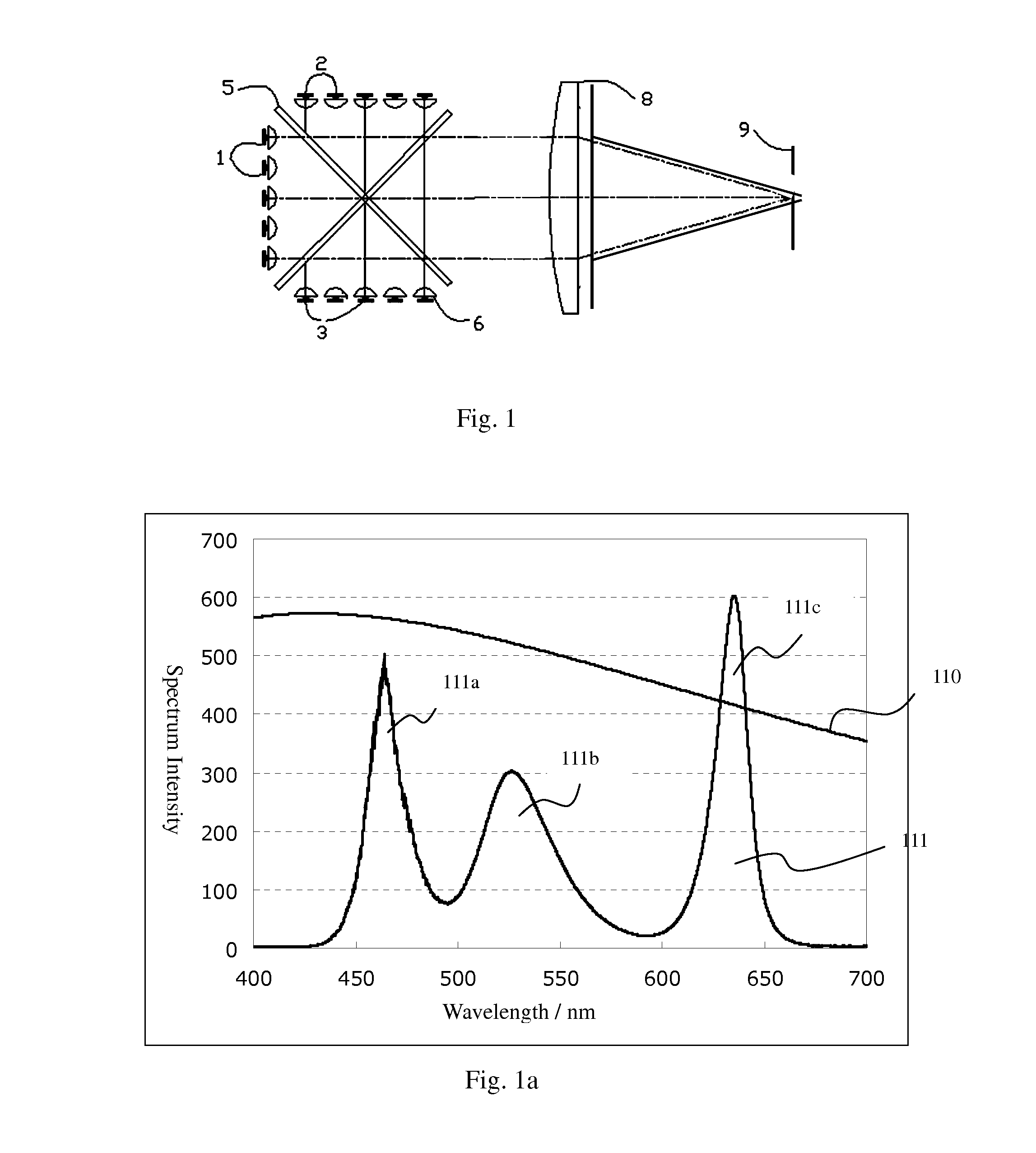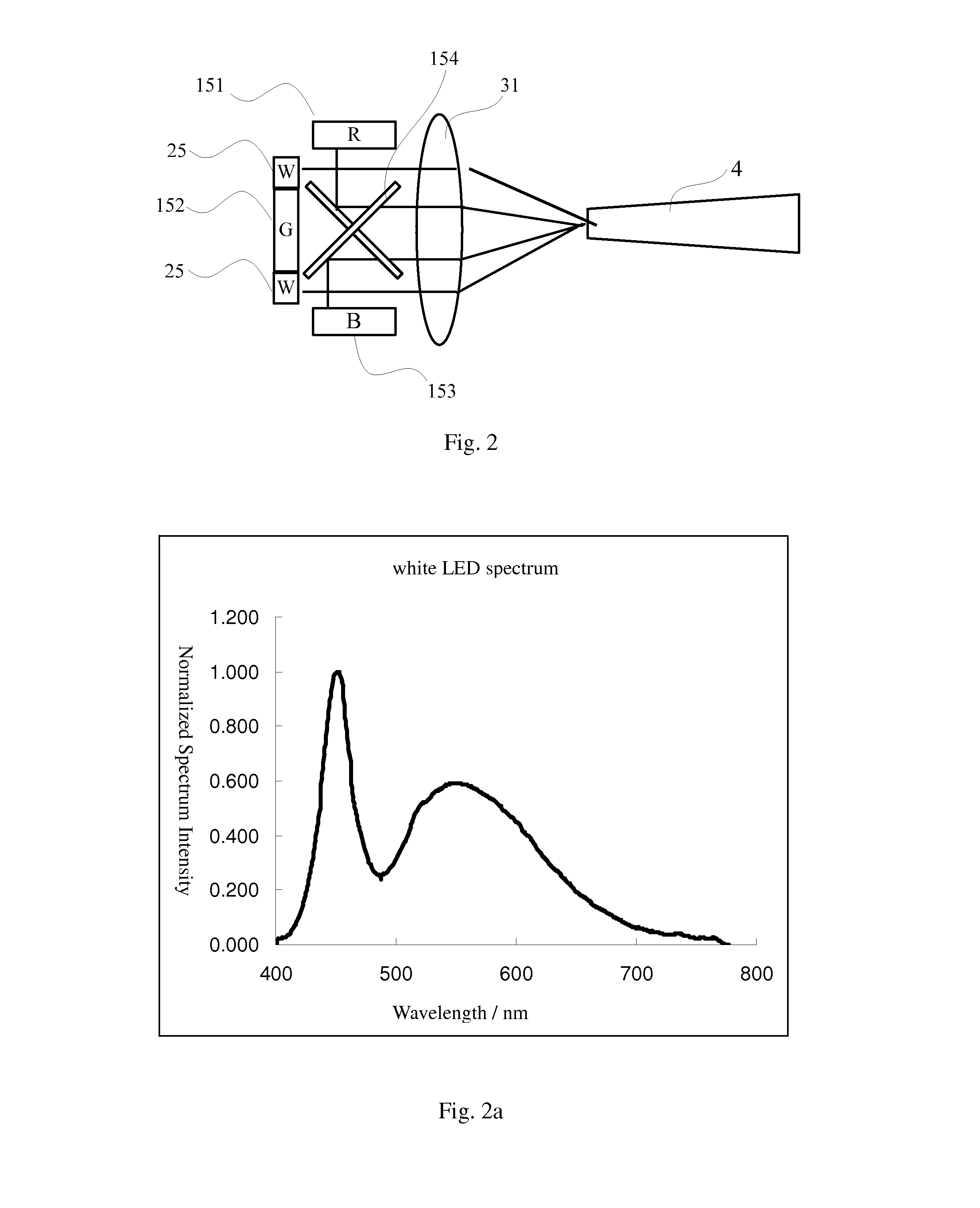High luminance multicolor illumination devices and related methods and projection system using the same
- Summary
- Abstract
- Description
- Claims
- Application Information
AI Technical Summary
Benefits of technology
Problems solved by technology
Method used
Image
Examples
first embodiment
[0045]FIG. 3 illustrates a schematic view of an illumination device according to the present invention. The illumination device includes red (R), green (G) and blue (B) primary color channels whose light are combined by an X-shaped dichroic filter set including filters 350, 351. In the illustrated embodiment, the dichroic filter 350 reflects red light and transmits green and blue lights, and the dichroic filter 351 reflects blue light and transmits green and red lights. As a result, the combined light containing red, green and blue lights is output to the right of the dichroic filter set 350, 351 in FIG. 3. In this embodiment, the red and blue channels include red LEDs 311 and blue LEDs 312, respectively, emitting narrow band red and blue lights.
[0046]In conventional technologies, the green channel only includes green LEDs. To broaden the spectrum of the green channel, in this embodiment, the green channel includes two types of light sources, where the first green light source gener...
second embodiment
[0052]In this embodiment, by introducing the green phosphor LEDs 301, the light of the green channel has a broadened spectrum, which is wider than the spectrum of the green LED light by more than 10 nm. Further, by independently controlling the two green lights, the output green light of the green channel is adjustable between the vivid narrow band color and the soft wide band color. Alternatively, the wide band output green light can be achieved by using two narrow band green lights, as generally described earlier and as will be illustrated by the example of the second embodiment described below.
[0053]In a second embodiment of the present invention, the illumination device employs two red LEDs as examples of two narrow band light sources. As shown in FIG. 6a, the spectrum of the light generated by the first red LEDs is 601, whose spectrum width FWHM is 15 nm; the spectrum of the light generated by the second red LEDs is 602, whose spectrum width FWHM is also 15 nm, but the peak wav...
third embodiment
[0059]To make the two blue lights in blue channel and two red lights in red channel respectively closer to being perceived as “the same color”, preferably, the dominant wavelengths of the two red lights are less than 35 nm apart, the dominant wavelengths of the two blue lights are less than 15 nm apart. The generation of wide band yellow light is used as an example below to explain how wide band combined light is generated in the illumination device of the A wide band yellow light is formed by combining a wide band red light and a wide band green light. Thus, the red phosphor LEDs 513 and the green phosphor LEDs 514 are turned on, while other light sources are turned off. The emission spectra of the red phosphor LEDs 513 and green phosphor LEDs 514 are shown in FIG. 8. After passing through the dichroic filter set 550 / 551, both spectra experience certain loss. This is because the two spectra shown in FIG. 8 have a range of overlap, which leads to losses in the combining process usi...
PUM
 Login to View More
Login to View More Abstract
Description
Claims
Application Information
 Login to View More
Login to View More - R&D
- Intellectual Property
- Life Sciences
- Materials
- Tech Scout
- Unparalleled Data Quality
- Higher Quality Content
- 60% Fewer Hallucinations
Browse by: Latest US Patents, China's latest patents, Technical Efficacy Thesaurus, Application Domain, Technology Topic, Popular Technical Reports.
© 2025 PatSnap. All rights reserved.Legal|Privacy policy|Modern Slavery Act Transparency Statement|Sitemap|About US| Contact US: help@patsnap.com



